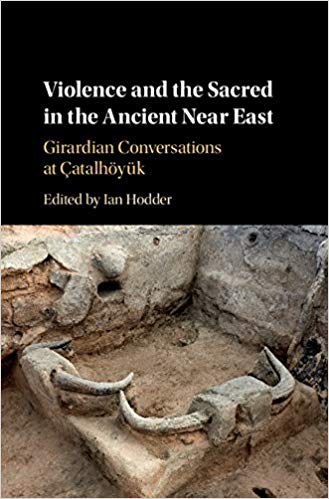Again the Göbekli Tepe research project did have the great pleasure contributing to another volume edited by Ian Hodder (Stanford University, California) which has been been recently published: “Violence and the Sacred in the Ancient Near East. Girardian Conversations at Çatalhöyük” (Cambridge University Press, 2019) [external link] brings together scholars of the mimetic theory of René Girard, for whom human violence is rooted in the rivalry that stems from imitation and archaeologists working at the Neolithic sites of Çatalhöyük and Göbekli Tepe in Turkey. At both sites there is evidence of religious practices that center on wild animals, often large and dangerous in form. Is it possible that these wild animals were ritually killed in the ways suggested by Girardian theorists? Were violence and the sacred intimately entwined and were these the processes that made possible and even stimulated the origins of farming in the ancient Near East?
Offering a perspective from Göbekli Tepe and related sites, our team contributed a paper (by , , , , , on “Ritual Practices and Conflict Mitigation at Early Neolithic Körtik Tepe and Göbekli Tepe, Upper Mesopotamia” (pp. 96-128):
“The cognitive principles of the social brain have remained unaltered since their appearance in anatomically modern humans in Africa some 200,000 years ago. However, by the Early Holocene these capacities, were being challenged by the outcomes of newly emerging lifeways , commonly referred to as ‘Neolithic’. Growing levels of sedentism and new and expanding social networks, were prompting a unique series of behavioural and cultural responses. In recent years, research at the early Neolithic (PPNA) occupation site of Körtik Tepe has provided evidence for heightened levels of interpersonal violence and homicide; yet, at the same time, there are no indications in the present archaeological record for between-group fighting (‘warfare’). In this study, we investigate whether this scenario, at a time when we might expect to see a rise in inter community frictions in the wake of adjusting subsistence strategies and socio-political boundaries, can be at least partially explained by René Girard’s mimetic theory. To this end we consult the pictorial repertoire from the contemporaneous and extraordinary site of Göbekli Tepe.”
Book Details
Expected online publication date: March 2019
Print publication year: 2019
Online ISBN: 9781108567626
https://doi.org/10.1017/9781108567626
(Detailed table of contents and introduction chapter available on publishers website.)

Thank you so much for posting this!
I have long desired to read a study about the applicability of Girardian theory (mimetic, violence and sacred/sacrifice etc.) to Gobekli Tepe and other PPN cites.
Will read with interest.